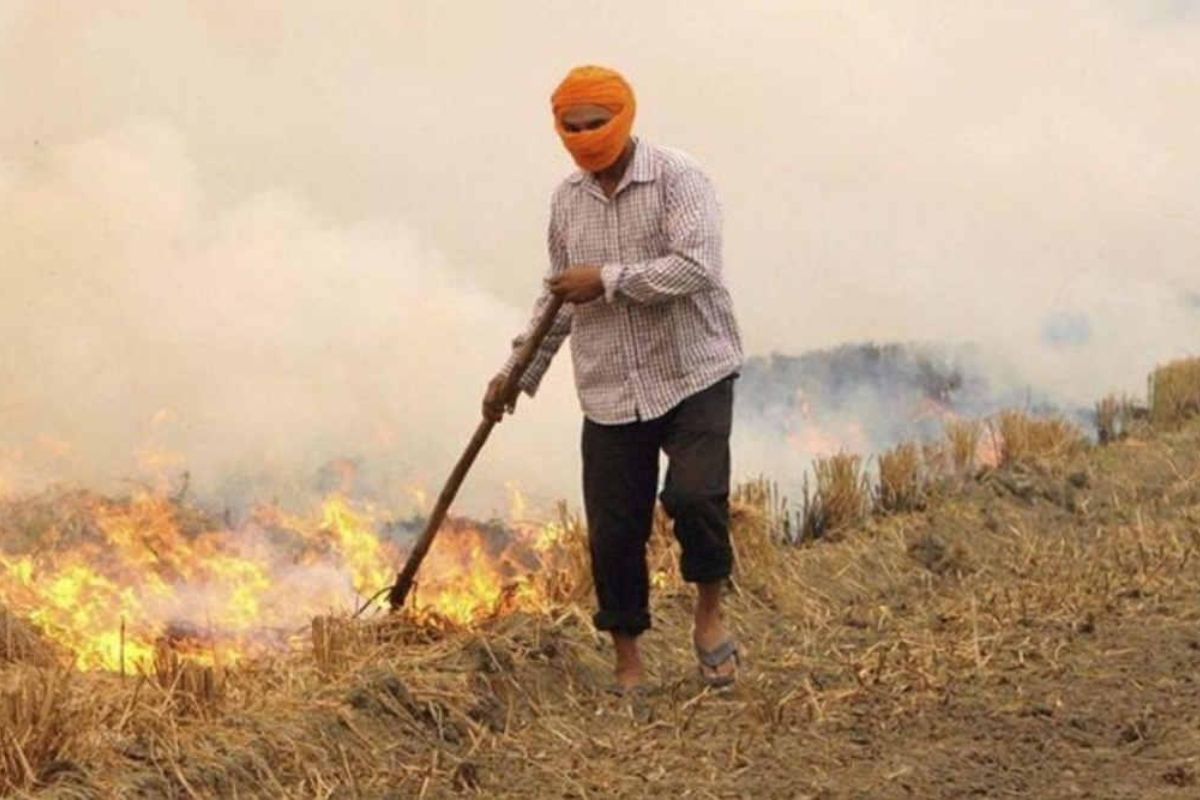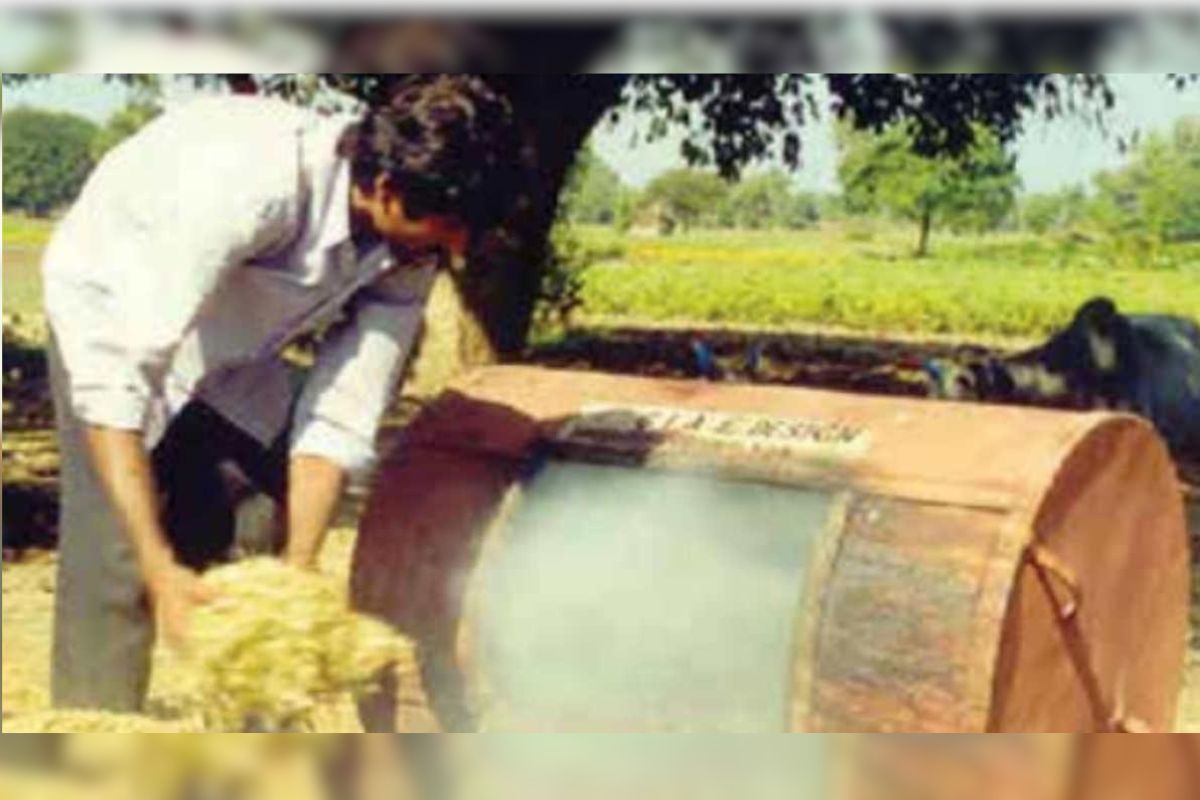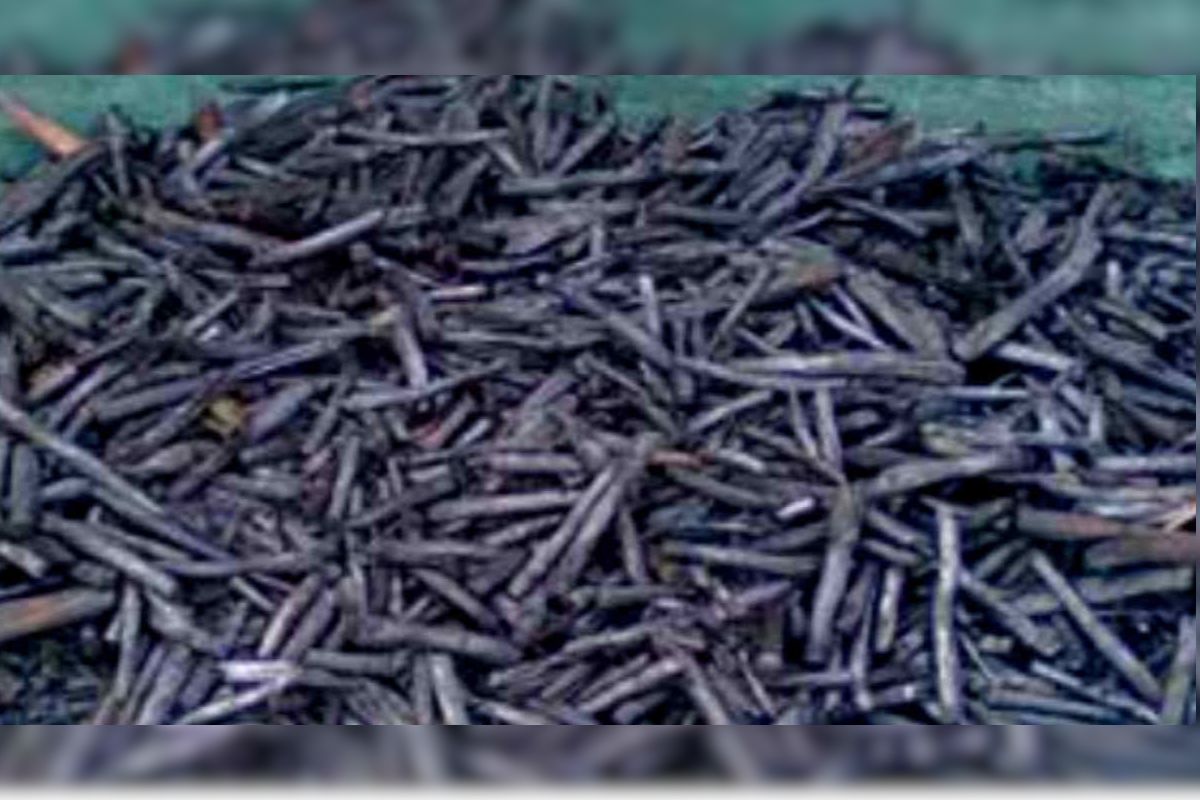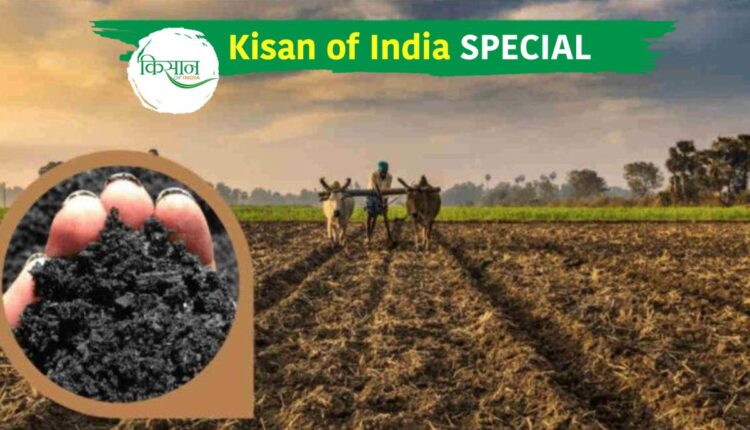Biochar: Domestic and Scientific method of making soil fertile, know why its Unique
Biochar is the cheapest and easy-to-make tonic to improve soil health.
Chemical fertilizers and pesticides may have played an essential role in the Green Revolution, but it is undeniable that the fertility of the land has declined, and the environment has been polluted. That’s why, in developed countries, strict abstinence has been started from the crops produced by adopting chemical measures. The chemical measures did not make the productivity of the soil sustainable. That’s why it became necessary all the time.
To avoid the side effects of chemicals, there is a need to identify natural solutions that are friendly to the farmer and the environment, emphasizing returning to traditional natural or organic farming.
In search of these objectives, scientists have proved in the seventh decade of the last century that soil fertility can be maintained only by the abundance of organic matter. This matter increases the quantity of those microorganisms that make it fertile in the soil. It ultimately provides nutrients to the crop. To overcome these challenges, scientists have developed ‘Biochar’, which is indeed a remedy.
Making biochar also makes the best use of the unfathomable biomass present on the earth and helps in environmental protection. Because decomposition or decomposition of biomass releases many toxic greenhouse gases into the atmosphere and causes ‘global warming.’

What is Biochar?
Biochar, i.e., ‘Organic Charcoal’, is related to ‘Bio Fertilizer’ and ‘Charcoal’. It is a very cheap, domestic, and scientific technology that can increase the fertility of any soil for decades and centuries. Microorganisms that provide continuous nutrients to the soil naturally are called ‘biofertilizers,’ and substances with a high amount of carbon or charcoal are called ‘charcoal.’ The word ‘Biochar’ (Bio + Char) is formed by joining the initial letters of ‘Bio’ and ‘Char.’
Biochar is a high-carbon content material. It is made by burning any kind of biomass or organic material like wood, bone, crop waste, etc. But this burning process must occur in the almost absence of oxygen. This process of burning is called ‘thermolysis’ or pyrolysis.
The purpose of pyrolysis is to burn the biomass in such a way that the moisture or other volatile substances present in it are removed and the remaining elements are formed by the heat of the fire into solid pebbles or granular crystals. When cooled, this coal or biochar and its ash containing more than 50 percent carbon in the fields gives miraculous results to the soil.

Why is Biochar miraculous?
Farmers have been familiar with the glory of carbon for centuries. That’s why they have been burning biomass and sprinkling its ashes on their fields and crops. But when biomass ash with barely 2-4% carbon has been found to be beneficial, then just imagine how widespread and beneficial the benefits of biochar with more than 50% carbon will be! Actually, the basic mantra of fertility of any soil lies in biochar itself. Apart from carbon, it is a complex mixture of metallic nutrients with hydrogen, oxygen, nitrogen, potassium, phosphorus, zinc, calcium, potash, sulphur, copper and ash etc.
Biochar is directly related to increasing the number of beneficial micro-organisms like ‘mycorrhizal’ fungus present in the soil. Together, all the elements make the soil fertile, while the main role of carbon molecules is to absorb moisture and become a medium for the movement of oxygen. With the increase in the amount of carbon in the soil, its acidity decreases. Biochar is also called soil tonic or soil conditioner or ‘carbon sink’ or ‘carbon vessel’. It is also a great friend of the environment. This helps in balancing the ‘green house effect’ of the earth.
The decomposition of the carbon content present in biochar is so slow that it takes hundreds to thousands of years. In this way, it continuously maintains carbon accumulation in the soil. Biochar is also an easy way to store the carbon element present in many organic gases like soluble carbon dioxide, carbon monoxide in the atmosphere. It increase heat and pollution on the earth for a long time. By making biochar, poisonous greenhouse gases like methane and nitrous oxide also do not go directly into the air.
Biochar is a nutritious micro storehouse of the soil
Excess of biochar also protects against diseases caused by soil and crops. In its extremely porous nature, where on one hand there is more capacity to absorb moisture, on the other hand, in its microscopic pores or tunnels, a vast community of beneficial micro-organisms like ‘mycorrhizal’ fungus make their home. Because of its microscopic pores, biochar is a highly absorbent material. Its shape plays the role of micro warehouses giving moisture and nutrients to the soil.
At the time of rain or irrigation, biochar tunnels store more molecules of water and nutrients in their large surface area and keep supplying it at the time of crop nutrition. Biochar prevents leaching into the groundwater by fixing nitrogen present in the soil. The direct effect of improving soil properties with biochar is seen in crop and yield. This reduces farmers’ dependence on chemical fertilizers and the cost of cultivation. Therefore, biochar has been considered as an easy and important means of increasing the income of the farmers.
Also Read: Azolla Cultivation: Beneficial for animals as well as for paddy crop
Method of making Biochar
The method of making biochar is called Pyrolysis. There are many ways to do this, from household to industrial production. The Central Institute of Agricultural Engineering (CIAE) and the Indian Agricultural Research Institute, Delhi have also developed small scale biochar making machines. With these, it can also be made in the fields and barns.
Hyderabad-based Central Dry Agriculture Research Institute has developed a mobile biochar furnace for small and marginal farmers. It is easily available in the market. It is made by making 40 holes of 2 cm size in the bottom of a 212 liter iron drum. The top of the drum has a 16 x 16 cm covered gate for filling organic products. It is filled with crop residues or biomass.

This biomass filled drum is kept on a large circular chulha and burnt for 10-15 minutes. The smoke coming out of it is white in the beginning, but soon the smoke turns black. At the same time, after removing the drum from the stove, close its lid and seal it with wet clay. When the drum cools down in 3-4 hours, then its burnt-under-burnt substances come out and filter it with a thick sieve. This is the simplest method of making biochar. It can be put in the fields immediately or can be kept in any other vessel or gunny bag for future use.
At the field-barn level, biochar can also be prepared by burying organic matter in the soil. The burning of this fire in minimum oxygen is the most important aspect of biochar because if this fire is used in the open, then the smoke will spread pollution. The flames will generate heat and the fraction of unburnt carbon in the ash remaining at the end will be barely 5%. The carbon content in biochar is at least 50%.

Quality of Biochar
The process of making biochar produces very fine porous charcoal. For this, the less oxygen i.e. organic matter is burnt, the more carbon content will be generated in it. That is why the quality of biochar depends on the type of biomass used and the temperature at which it is burnt.
This temperature can range from 300 to 1000 degree Celsius. Biochar made from animal bone has the highest carbon content. This can stabilize soil fertility for thousands of years. Biochar is a mildly radioactive substance and has a half-life of 100 to 10,000 years.
80% of the carbon from biochar remains in the soil as a stubborn organic resource that microorganisms cannot break down. Therefore, biochar can be used as a useful soil amendment for all types of soils. The use of biochar in soils of arid and semi-arid areas with low rainfall and nutrient availability shows great benefits.
Biochar also has the potential to be a substitute for fossil fuels. But currently the emphasis is on adopting it as a soil carbon accumulator all over the world. It reduces the toxicity of metals like aluminum in the soil and keeps pathogenic microbes away.

How to use Biochar in the fields?
At the time of plowing the field, biochar should be mixed till the top surface of the soil i.e. 10-15 cm deep. It can also be sprinkled on the beds. It can also be sprayed before sowing or during standing crop. However, its immediate impact will vary.
It can be used simultaneously in large quantities or several times in small quantities. But keep in mind that biochar is not a substitute for organic or chemical fertilizers in any way. But the yield can also be increased by reducing some amount of fertilizer and adding part of biochar in its place.
Under the National Initiative on Climate Resilient Agriculture (NICRA), scientists of the Central Research Institute for Dryland Agriculture, Hyderabad have prepared a detailed research report on biochar. Accordingly, 10 tones (10,000 kg) of biochar per hectare can be used to increase the fertility of existing fields. Whereas barren or unproductive land can be rejuvenated by using 50 tones per hectare.
Brief History of Biochar
Biochar is found in soils around the world because of ancient practices of burning biomass. But the unique role of biochar in carbon accumulation has been known to man recently. Biochar was used in the Amazon rain forest basin about 2,000 years ago to increase soil fertility. Due to this, the fertile soil of the islands there was called ‘Terra Preta’ or ‘Black Earth’. It was identified by a scientist named Wim Sombroek in the 1950s. In-depth study of this clay revealed that it was made thousands of years ago by the local tribals from biochar.
It still covers 10 percent of the Amazon Basin and is rich in carbon and nutrients. Similar soils have also been found in Ecuador, Peru, Benin and Liberia in West Africa.
For centuries, farmers have been adopting organic methods like jhum cultivation, biomass recycling and crop rotation to strengthen the soil carbon cycle. But since the 1970s, soil scientists began to see biochar as one of the largest and most sustainable soil improvers. Also, by the 1990s, the modern and scientific glory of biochar was established, that it can improve soil properties over a long period of time can be refined. As the decomposition is so slow that it will remain in the soil for about 2000 years. The rate at which biochar decomposes to carbon will also depend on the organic matter or biomass it is made from.
Also Read: Use of Spot Fertilizer Applicator is beneficial in Cotton Cultivation
Contact us – If farmers want to share any valuable information or experiences related to farming, they can connect with us via phone or WhatsApp at 9599273766 or you can write to us at “[email protected]”. Through Kisan of India, we will convey your message to the people, because we believe that if the farmers are advanced then the country is happy.
You can connect with Kisan of India on Facebook, Twitter, and WhatsApp and Subscribe to our YouTube channel.



